The XFL: A Second-Chance League and Its Not-My-First-Rodeo Commish

This story appears in the May 6, 2019, issue of Sports Illustrated. For more great storytelling and in-depth analysis, subscribe to the magazine—and get up to 94% off the cover price. Click here for more.
The XFL’s initial initial means nothing. That’s always been the case. The league’s media guide from its first iteration, which collapsed after three months in 2001, spells this out: “The letters XFL are not an abbreviation. The name of the league IS NOT the Xtreme Football League,” as many had assumed. As the outfit now builds toward a reboot that kicks off next Feb. 8, this fact remains true. The F and the L act to indicate, if only indirectly, a football league. But the X is a variable. It could mean anything.
“I don’t know what our corporate response is,” says the new league’s commissioner, Oliver Luck, “but I like to think it stands for exceptional and exciting and excellent. That’s just me, in my own little world.” He turns to the publicist seated next to him. “Is that O.K.? Can I say that?” She approves.
Luck says this on a Tuesday afternoon in January, traffic whirring down I-95 just outside a fourth-floor conference room at the XFL’s temporary offices in Stamford, Conn. Until a permanent setup opens in April, it’s here, in a nondescript cubicle farm across the street from the black-flagged headquarters of the XFL’s sister company, WWE, that much of the league-building has been done. Luck, the architect of it all, is the embodiment of establishment credentials: five-year NFL quarterback, primarily backing up Archie Manning and Warren Moon with the Houston Oilers; father of Andrew Luck, himself a Pro Bowler in 2018 while quarterbacking the Colts; highly-regarded sports exec with a résumé spanning NFL Europe, MLS and the NCAA. Avuncular and genial, the 58-year-old Luck speaks with a voice that could pass for Cris Collinsworth’s and with a worldliness befitting a Rhodes Scholar finalist. He is erudite and thoughtful, quick with a historical quote and endlessly tickled by trivia, like how Pennsylvania’s coal country high schools once played in the Anthracite League. At the 1987 press conference announcing his retirement from the Oilers he recited to reporters a stanza from Robert Frost’s “Provide, Provide.”
It is an identity starkly contrasting the existing impression of the original XFL, a boorish, irreverent outfit launched by pro wrestling magnate Vince McMahon that flamed out spectacularly after one car crash of a season. That league’s raison d’être was to exacerbate (and capitalize on) football’s powerful id: harder hits, fewer penalties, more ogled-over cheerleaders. McMahon antagonized the NFL and relished his rogue status. When one reporter asked if a football league was his attempt to “go legit,” after wrestling, he smirked and replied, “May I never be ever thought of as f-----’ legit.”
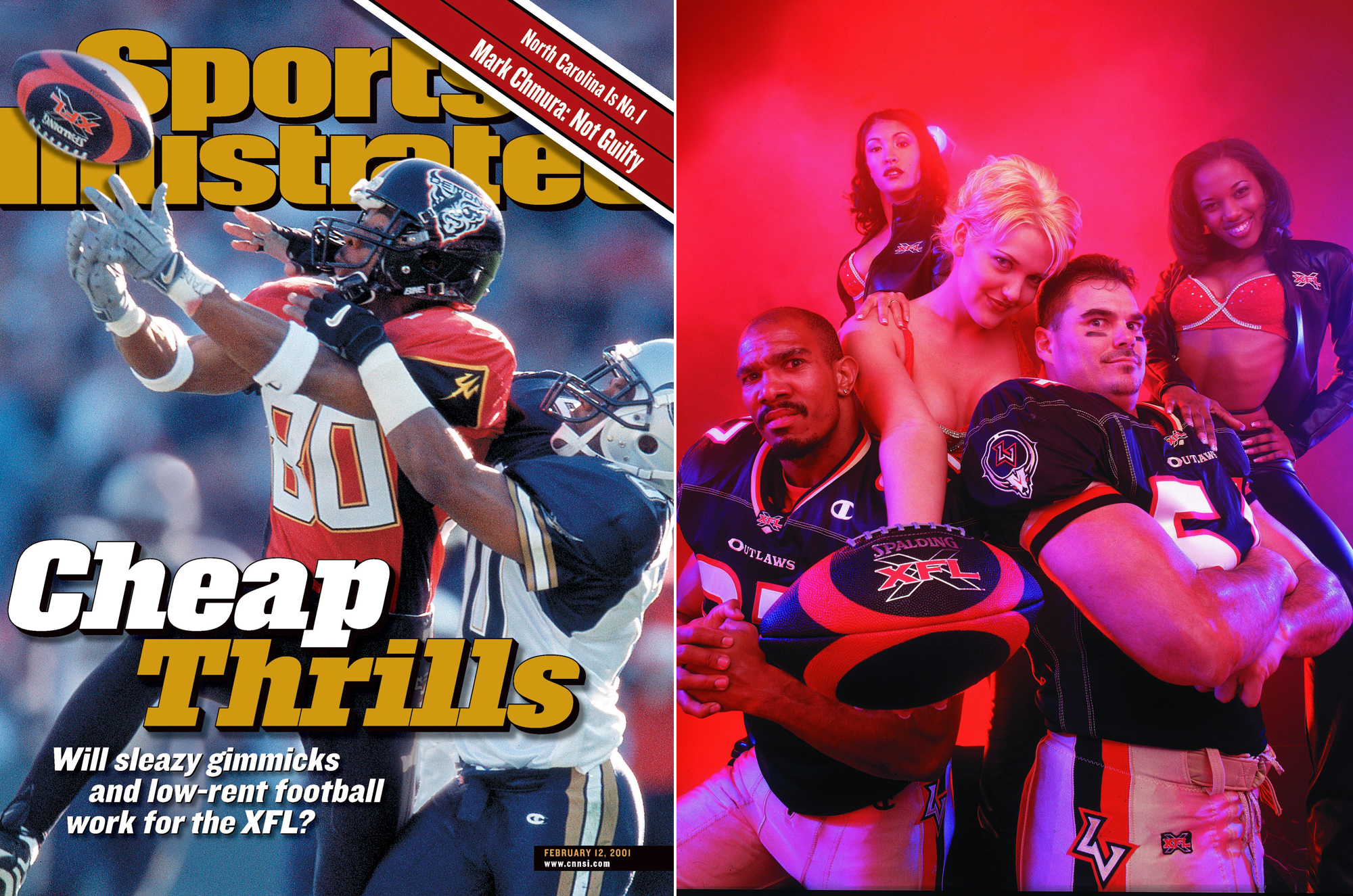
McMahon was more temperate and stately in January 2018 when he announced on a YouTube livestream that the new XFL would begin play in 2020. This time the games would be faster, safer, “fan-centric” and played in less than three hours. The league logo’s color scheme conspicuously shifted from red-white-and-black to red-white-and-blue, and players, McMahon said, would be required to stand for the national anthem. Beyond that, specifics were sparse.
In many ways the new XFL seemed less like a league than an idea for one, and the announcement was met with skepticism. Some dismissed XFL 2.0 as an alt-league pandering to the MAGA set. Others surveyed football’s history of failed upstarts—the USFL and UFL, the original Arena Football League, various international spin-offs—and questioned whether a new spring league could survive a climate in which football participation is trending downward, organizations are having trouble getting insured and the sport is being attacked on matters ranging from head trauma to political activism to rules changes. Here, it seemed, was another misguided money pit dug in spring football’s already crowded graveyard.
Luck takes the long view. “I’m a 1960 baby, and since I can recall, football has been like this,” he says, raising a flat hand in front of him and tilting his fingers upwards. “It’s been a more important, more substantial part of American life.” The NFL’s ratings dip in 2016 and ‘17? A blip, since reversed. ABC and FOX—and their cable networks ESPN and ESPN2, and FS1 and FS2, respectively—are optimistic enough that they will be broadcasting the XFL's games nationally on weekend afternoons. (According to SportsBusiness Daily: Instead of paying the league for its TV rights, the networks will cover the XFL’s estimated $400,000 per-game production costs.)
What those networks seek is some part of those 85 million Americans who, according to research McMahon commissioned from McKinsey, consider themselves football fans, about half of them “people who have a void in their lives,” says Luck, “come Super Bowl Sunday, because it’s over.” The XFL, he says, is aimed at filling that void—a ploy recently attempted by the Alliance of American Football (or AAF), which lasted eight weeks before folding in April.
One unique obstacle the XFL will have to overcome is the perception that this is merely a reprise of the 2001 league. But the name, those involve contend, is meant only as a hook, not an indicator. “There are a limited number of letters in the alphabet,” Luck says. “AFL? Nope, taken. BFL? Eh, doesn’t sound very good. CFL? Taken. DFL? What’s the D stand for? ... They went all the way down the list, slept on it for a couple of days, came back—and, long story short, they said the XFL still has some brand equity.”
Luck, a history major, devours nonfiction, especially on the formation of the United States. He is fascinated by the past’s great what-ifs, the alternate realities that might have unfolded without, say, the Louisiana Purchase or Russia’s sale of Alaska to the U.S. “It wasn’t fate that those things turned out the way they did,” he says. “They could have come out differently.” Now he must ensure that this XFL does too—first by figuring out what the XFL is.
Around the turn of this century, when America developed a particular appetite for aggro schlock (see: nü-metal, Surge soda), the XFL was marketed to football junkies who evidently felt the NFL was not violent or horny enough. “This will not be a league for pantywaists or sissies,” McMahon crowed.
The pregame coin toss was replaced by a two-player “scramble” to grab possession of a ball at midfield. There were no fair catches. Cheerleaders featured prominently in slow-mo, foggy-lensed ads on NBC—WWE’s 50-50 partner in the original—and were publicly encouraged by McMahon to date players so that they might later dish to reporters about whether a fumbling QB, as McMahon put it, “did the wild thing last night.” Less offensive, but equally tacky, were the WWE personalities in the broadcast booth; the teams dubbed the Maniax, the Rage and the Xtreme; and the jersey-back nicknames in lieu of surnames—most famously HE HATE ME, but also BIG DADDY and DEATHBLOW and so on.
The first televised game, which aired as a lead-in to Saturday Night Live on Feb. 3, 2001, drew a curious audience of more than 50 million. But sloppy, uninspired play failed to sustain interest, and by March the XFL was pushing record-low ratings for a primetime major-network sport. After the championship game that April, NBC pulled out, and WWE eventually followed; both lost $35 million. The league’s supernova life cycle earned it the No. 10 spot on Entertainment Weekly’s 2010 list of “TV’s 50 Biggest Bombs and Blunders,” and in 2017 the XFL was eulogized in a wistful ESPN documentary directed by Charlie Ebersol, son of longtime NBC Sports czar and original XFL partner Dick Ebersol. (Charlie also co-founded the AAF. A lawsuit against him by venture capitalist Robert Vanech claims the two men approached McMahon about an XFL reboot in early 2017, after which McMahon decided to pursue it on his own.)
Luck had only vague memories of the XFL’s first go-round when one of McMahon’s associates contacted him last spring about heading the new attempt. Working at the time as an NCAA regulatory exec in Indianapolis, Luck spent two Saturdays at WWE HQ hearing McMahon’s pitch for a clean-slate revival—general visions of a faster and safer and more accessible game, bolstered by the McKinsey research about the size of America’s football-loving public and the implied power of that public’s wallets. McMahon touted WWE’s relationships with Fox and ESPN, as well as his willingness to invest as much as $500 million in the project. He just needed someone who knew football and could turn all that into a league.
For Luck, it would not be an entirely novel task. He had been 30, three years out of the NFL and working as a commercial litigation lawyer, when he was named the inaugural GM of the Frankfurt Galaxy, a founding franchise in the NFL-backed World League of American Football (later rebranded NFL Europe). There he sold Germans a strange foreign sport by turning games into spectacles of excess: hours-long pregame parties, blaring in-game deejays, sideshow acts like fire-eaters and jetpack flyers. And it worked. In 1992, the WLAF’s second season, Frankfurt was the only profitable franchise, its circus atmosphere soon becoming the league standard. By ’96, Luck was NFL Europe’s president.
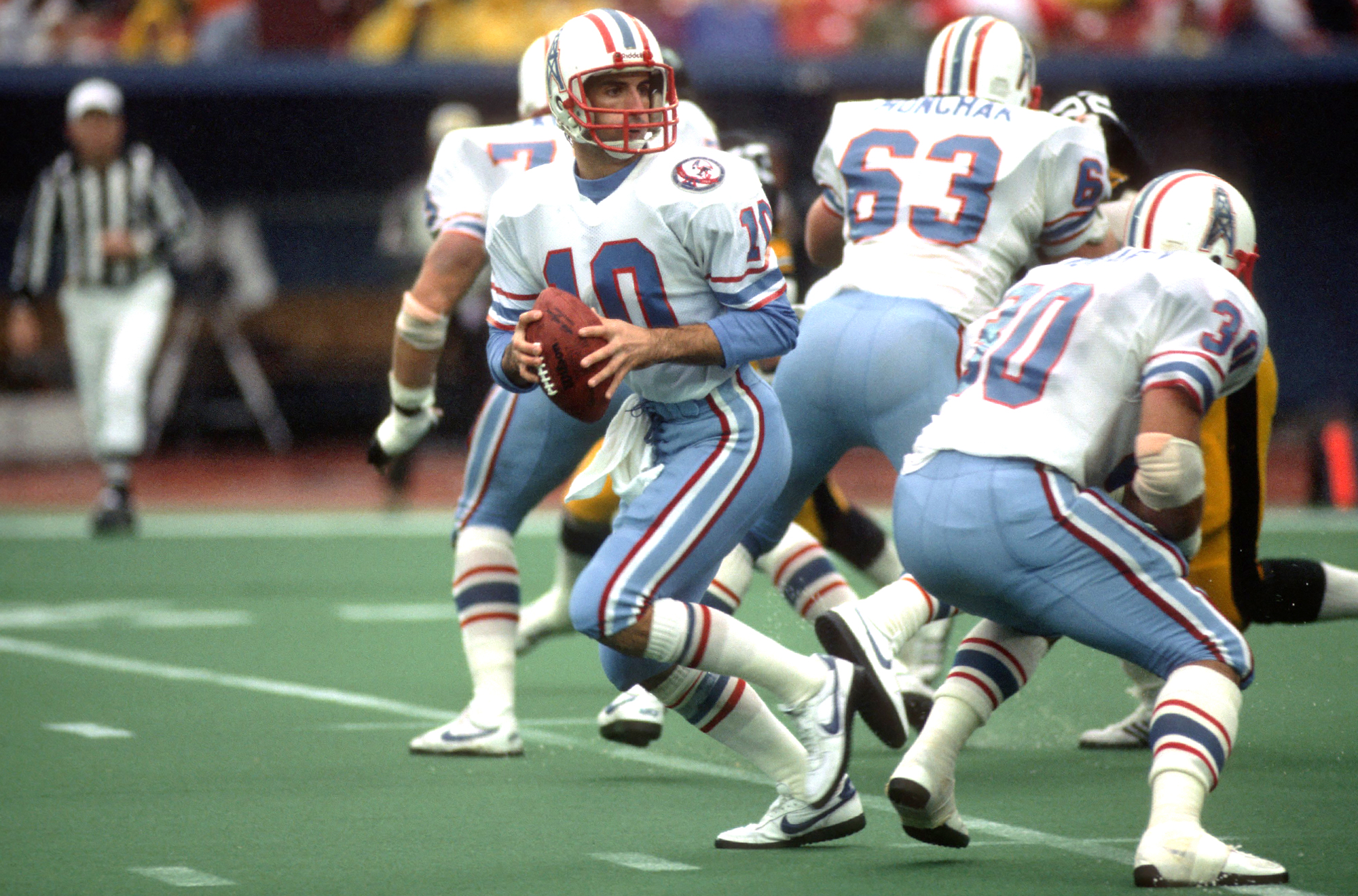
In 2001 he returned stateside, to his wife Kathy’s hometown, where he served as CEO of the Houston sports authority. There he continued building, overseeing the opening of new homes for the Texans and Rockets. He lured an MLS franchise away from San Jose and jumped aboard as GM of the newly-christened Houston Dynamo, which won two MLS Cups in Luck’s five-year tenure. He then left to serve as athletic director at his alma mater, West Virginia, which in 2012 he steered from the dissolving Big East to the cash-sown pastures of the Big 12.
Some have called Luck a serial entrepreneur; he jokes that he can’t hold a job. The son of a chemical engineer and a chemist, he has long been restless in mind and body. He says his childhood in Cleveland was symbolized by his five-speed banana bike and the autonomy it provided to ride to parks and play sports, or to visit nearby college dorms and steal issues of Playboy. “I was probably not ADD in a formal fashion,” says Luck, “but I always wanted to do something else.” In high school he founded a ski club named after labor activist Samuel Gompers, organizing excursions to New York and Ontario. In his NFL offseasons he studied law at Texas. (He got his J.D. in 1987.) “I was just bored,” he says. “I don’t golf.”
He was happy the last few years in Indianapolis; he enjoyed his work at the NCAA and the townhouse downtown. He got to see Andrew regularly, bike the Monon Trail. But the XFL, a true (and well-financed) sports startup, offered another opportunity to scratch his entrepreneurial itch. He asked for advice from his four children, who told him it sounded awesome. He asked Kathy, who wanted to know where they would be moving next. And he asked himself: Why not?
Starting a football league, it turns out, means making a lot of lists: potential players, potential coaches, potential team names. . . . Luck also had a staffer compile an inventory of every rotary club, country club and high school football booster program in each of the XFL’s eight markets—Dallas, D.C., Houston, Los Angeles, New York, Seattle, St. Louis and Tampa—so he could arrange local stump-speech tours to spark some buzz. “That’s where you evangelize,” says Luck, who pushes on those crowds a faster, safer, more creative game. “That’s what you have to do to do this job.”
You also have to endure plenty of meetings, including with what the XFL dubbed its “reimagination committee.” Twice last year Luck led brainstorming sessions about league rules, inviting the likes of Jim Caldwell and John Fox (former NFL coaches who, notably, have reputations as being schematically, ahem, conservative), as well as North Carolina chancellor (and sports medicine expert) Kevin Guskiewicz and former WNBA commissioner Donna Orender. That group holed up for hours in a hotel conference room, debating details as foundational as the down-and-distance format and the width of the field and hash marks. (All will match the NFL standard.) They weighed innovations ranging from the simple (a 30-second play clock, 10 seconds shorter than the NFL’s) to the progressively practical (headsets inside every player’s helmet, so coaches can call plays directly) to the radical (refs being tipped off on play calls through earpieces, to better focus their attention on relevant penalties). For now, all remain on the table.
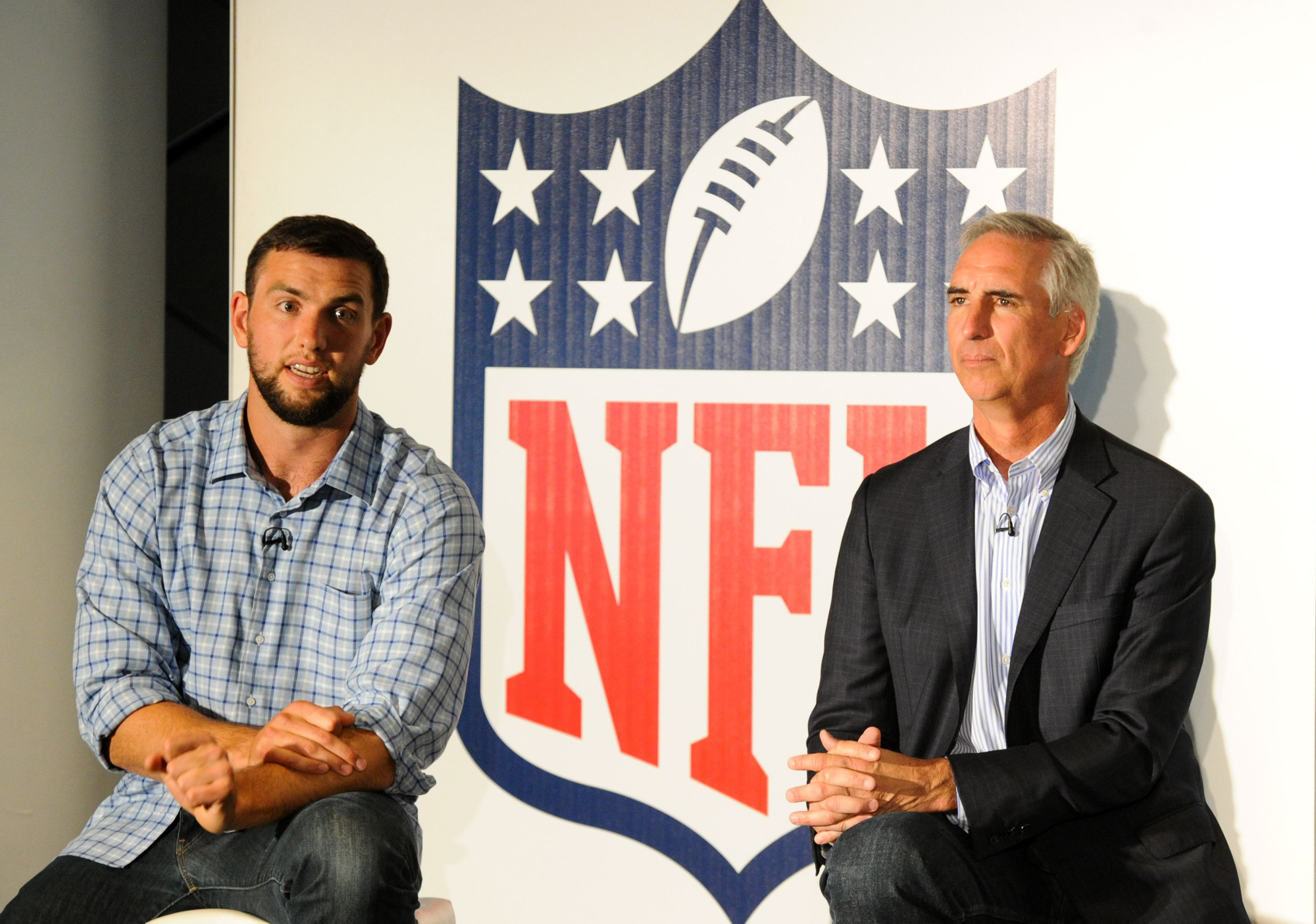
Almost certain to be adopted, however, are newly proposed formats for kickoff and overtime. For the former, the ball will be booted from a team’s 15- or 20-yard line, in order to prevent touchbacks; to cut down on the trauma of high-speed collisions, the rest of the kicking team will line up on the opponent’s 35, five yards from the return team’s blockers. In OT, teams will alternate offensive snaps from the opponent’s five-yard line, scoring one point for each touchdown or forced turnover, in a rapid best-of-five format inspired by soccer penalty kicks. “We needed an overtime that’s gonna be done quickly but that’s [still] real football,” says Luck.
In March the new commish and the four coaches the XFL had by then hired—Dallas’s Bob Stoops, D.C.’s Pep Hamilton, Seattle’s Jim Zorn and Tampa’s Marc Trestman—spent a weekend in Jacksonville with the experimental Your Call Football league, testing out proposed rules in scrimmages. The changes were a hit; coaches were already spitballing new strategies. “They like having something new,” says Luck.
The XFL had already tested its kickoff rule at a December scrimmage between two jucos in Mississippi. For that one Luck invited some NFL representatives, emblematic of how this XFL’s relationship with the NFL is markedly different from 20 years ago, when McMahon positioned himself as an adversary. Luck is open about his love for the more established league, from which he receives a pension and in which his eldest son stars. In December he even brokered a meeting at the NFL’s Manhattan office, where he and McMahon outlined for Roger Goodell the XFL’s intentions: innovate in the spring, don’t compete with the big boys in the fall. Luck says you’ll never hear him say a bad word about the old standard.
The NFL remains the celestial behemoth around which all football revolves. Given the salaries allowed by the XFL’s $4 million-odd salary cap for its 52-man rosters—roughly $77,000 per player; the NFL rookie minimum is $480,000—the talent pool is what Luck calls “the best of the rest”: undrafted rookies, young players a step too slow or a few inches too short for NFL standards. (The XFL’s inaugural draft will likely be held after NFL teams trim their 2019 rosters on Labor Day weekend.)
One possible exception: players too young for the NFL’s three-years-out-of-high-school requirement, like, say, Clemson QB Trevor Lawrence, who’s not draft-eligible until 2021. Luck says the XFL will consider these players on a case-by-case basis. The league will more aggressively target veteran passers who’ve clung to the NFL’s lower rungs without actually seeing action. “If you’ve been on a practice squad for three years and you’re running scout team, you’re not getting better,” says Luck. He cites his experience in Europe, where he saw NFL afterthoughts Kurt Warner, Brad Johnson and Jake Delhomme rejuvenate their careers with 10-game star turns before returning to start in Super Bowls.
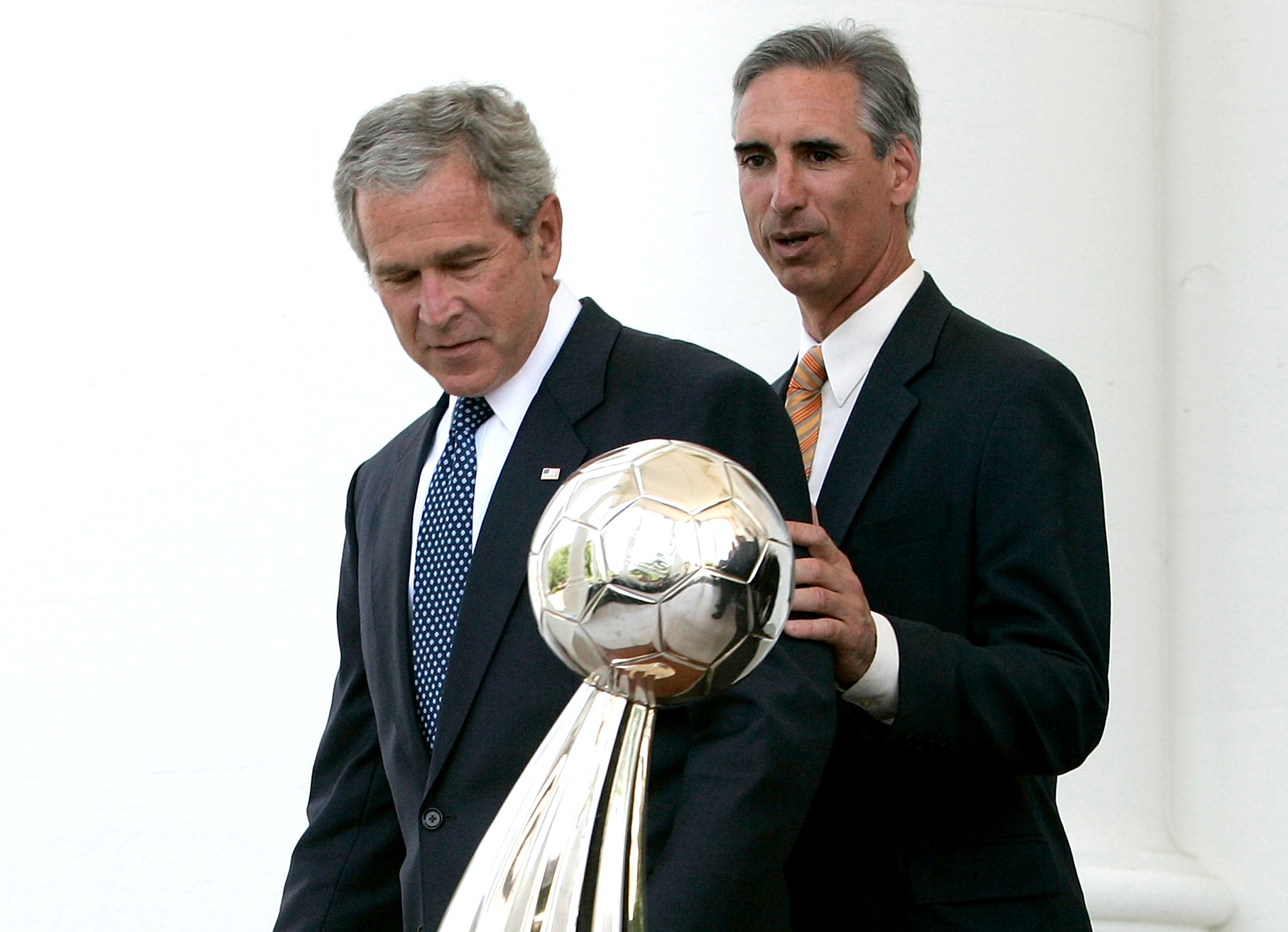
The odds of the XFL landing the NFL’s more prominent castoffs, though, seem slight. Luck ran into Tim Tebow at the Clemson-Alabama national title game in January and says he informally gauged the 31-year-old’s interest in getting under center again, but Tebow reaffirmed his commitment to baseball. Though Luck says he has softened McMahon’s original hard-line stance against players with any criminal history—it is now zero tolerance for credible accusations of felonies and domestic violence, with misdemeanors interpreted individually—he said in March he was unsure whether the XFL would welcome Johnny Manziel, who since then played two games for the AAF’s Memphis Express. And while the commish says he would “prefer not to test for marijuana,” he concedes he has not thought about how the XFL would handle a player like Josh Gordon, who has been suspended repeatedly by the NFL for using the drug, but without any attendant legal issues.
Then there’s Colin Kaepernick. The former 49ers passer was on Luck’s list of possible quarterbacks, so the commissioner contacted Kaepernick’s agent. He says he was told the QB was seeking a $20 million contract. “That’s a little bit out of our range,” says Luck. With salary a nonstarter, the conversation never turned to the conflict between McMahon’s anthem policy and Kaepernick’s protests of police brutality and racial injustice.
Asked his own feelings on the controversy of such demonstrations, Luck questions much of the premise. “We’ve conflated football games with patriotic zeal,” he says. “I don’t think attending a football game is any more patriotic than walking down the street to my local library. It’s just another activity we all enjoy.” He believes playing the national anthem is important and has had conversations with Andrew about players kneeling during it—a discussion he keeps private—but he does not expect that XFL games will feature, say, pregame military fly-overs. “We want to make our events a politics-free space,” he says. Could requiring players to stand for the anthem, though, be seen as a political stance in itself? “Yeah,” says Luck. “Could be. That’s Vince’s call. And I support it.”
This XFL will also be free of the original’s garishness. Gone are the jersey nicknames, the WWE crossovers, the cheerleaders. The ball might not be brown, but it’s unlikely to be defiantly black-and-red. Luck wants officials to adopt a high threshold for throwing most flags, to keep games in the two-and-a-half-hour range, but he still wants safety-related rules strictly enforced. It’s a tight window—upping football’s speed without upping its danger. But Luck believes he can make that throw. He wants the XFL to be “a responsible member of the football community,” to be “familiar yet unique.” He doesn’t want anything gimmicky. (“You live on the edge, you end up falling off.”) His 27-year-old daughter, Mary Ellen, likes to say he’s trying to create a “sensible league.”
Nine months from kickoff, much remains TBD. There are coaches to hire, franchise names to finalize, logistics to sort out. Will team facilities serve breakfast? Will the two Texas franchises travel by bus to play one another? Bringing more people into the fold will bring in even more ideas, which Luck welcomes. He wants to hear any suggestion that might make his football even better. He wants the XFL to be the league of Yes.
To converse with Oliver Luck is to be peppered with idioms. He’ll liken a person to the Platte River—“a mile wide and an inch deep”—or advise behaving like a duck, calm on top and paddling like hell underneath. His father-in-law, Dick Wilson, who grew up in Guatemala, had several of his own pet sayings, or dichos. One that stuck with Luck: Spend 80% of your time on your job but 20% looking for your next one.
Luck’s five years running the Dynamo were the most he’d spent in one position since his five with the Oilers. Now he thinks his nomadic path has taken him somewhere he can stay. “I’d love to be here 10 years from now, seven years, whatever,” he says. “I’m 58. Knock on wood, I’ve got another good 10 years.”
His reported $20 million contract, the length of which he declines to discuss, surely increases the likelihood of an extended stay. But what about those recurrent pangs of curiosity, that urge to hop on his Schwinn and go do something else? “To a certain degree, I’m not sure I want to take on another massive challenge,” he says. “This is a lot of work—and it’s just starting. Who knows. I’m not very good at predicting the future.”
Luck says he passed on joining the AAF due to concerns about its financing; he believes McMahon’s backing will help the XFL avoid a similarly disastrous fate. “Well-capitalized” is one of his go-to descriptors when explaining his optimism for the XFL. What this league might be in the long term, though, is another matter.
If the XFL isn’t taking on the NFL, and if even its top stars earn a fraction of the NFL minimum, it will inevitably be seen as a feeder league. That’s fine, Luck says. He hopes XFL players earn NFL jobs. What the XFL won’t be is a developmental league, incubating talent on the NFL’s terms. Luck uses words like “standalone” and “complement” and “sustainable.” The budgets for McMahon’s potential $500 million investment are for five years. Luck thinks that, even with other major sports in-season, enough of those 70 million football fans will tune in for the bet to pay off.
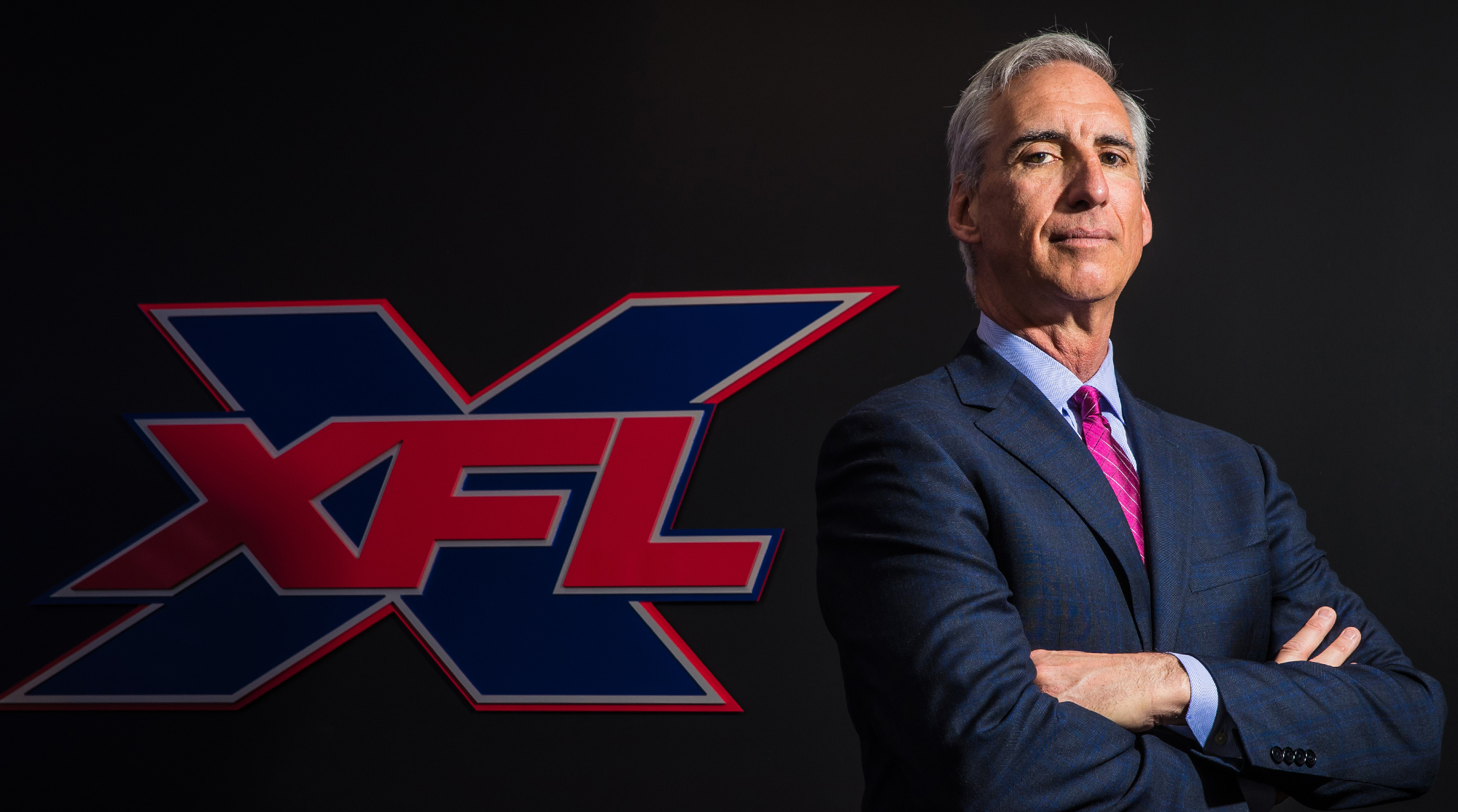
That same potential audience, however, just watched another start-up league go down in flames, making the XFL’s sell that much harder. “It’s a bit of a double-edged sword,” Luck says of the AAF’s demise this spring. The good: more players and coaches are available and looking for work. The bad: “It casts a little bit of a pall over spring football,” says Luck. “It’s number whatever in the litany of failed spring leagues.”
In a bit of upbeat salesmanship befitting his job, Luck sees opportunity there too. “It gives us a chance to explain why we’re gonna be different,” he says. “It’s: time and money.” When the XFL launches next February, two years after McMahon’s announcement, it will have had more than twice as much incubation time as the AAF.
Still, “there’s no schadenfreude or dancing on the grave,” Luck says. “I was hoping they would make it through this year and we could observe their playoffs, their championship game. Those are all things that would have helped us make good decisions.”
Luck is fond of the old adage that history doesn’t repeat itself but often rhymes. The first XFL represented the most ballyhooed pro sports league launch the U.S. has ever seen, yet it petered into oblivion. “That gives us a constant reference point to ask, Will [doing] that lead to 2001?” Luck says. “We want everybody to remember: We flopped the first time around. We gotta do it different.”
There will be scores of doubtful eyes watching. If the past is an indicator, droves will tune in that first weekend next February, out of curiosity. How will Luck keep those fans coming back this time? “I’m not sure,” he says, “beyond promoting the game and playing good football.”
A sensible answer, whatever it may come to mean.
Question or comment? Email us at talkback@themmqb.com.
